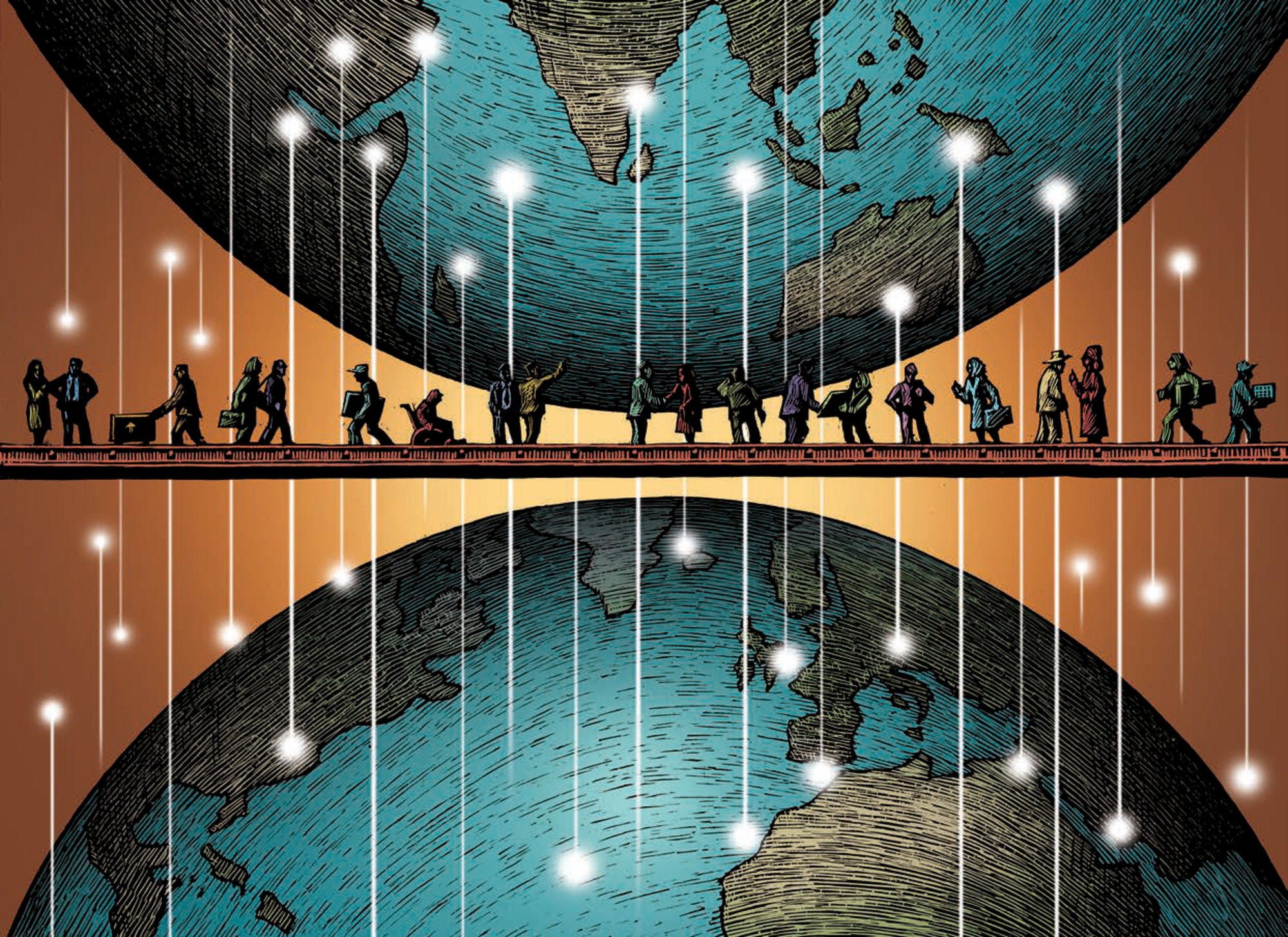On top of what was already the largest inflow of new permanent immigrants on record, Russia’s War of Aggression against Ukraine has led to the largest refugee surge to the OECD area since the end of World War II. One of the most striking features of this mass displacement is the disproportionate share of women who represent around 70% of all adult refugees. This stands in stark contrast to inflows of asylum seekers recorded in past crises, which predominantly consisted of men. The gendered nature of displacement from Ukraine has given new impetus for taking a gender lens when reviewing migration and integration policies, largely absent in most discussions on these topics.
Beyond the current Ukrainian crisis, the lack of a gender focus is surprising, as women have for a long time accounted for the majority of immigrants across the OECD. While immigrant men often arrive through labour market or humanitarian channels, women tend to arrive through other channels – with family migration being by far the predominant category. This has far-reaching consequences, as family migrants are often the blind spot in migration and integration policies. They often do not benefit from structured integration programmes, such as those available for humanitarian migrants, nor from a job offer as do labour migrants. In addition, whenever family migrants are taken care of by their sponsor and do not rely on benefits, they are often not the target of integration measures.
In this context, it is not surprising that immigrant women tend to face a “double disadvantage” – as women and as migrants – when migrating to OECD countries. Migrant and gender-specific challenges interact and often reinforce each other. As a result, in most OECD countries, the gender gap in migrant employment is twice as large as the gender gap among the native‑born.
As countries are increasingly looking into the potential contribution of working-age migrants to help addressing widespread labour shortages, it is more important than ever to consider the gender dimension of migration and integration policies. The two special chapters in this year’s International Migration Outlook take a close look at the underlying issues. As Chapter 5 shows, gender differences among immigrants in employment are largely driven by the often very low employment of immigrant mothers. The latter have an employment rate that is a staggering 20 percentage points below that of their native‑born peers.
Migration and integration policies have too often been gender-blind, if not implicitly focussing on men. Individual and cultural preferences of immigrant women are often considered as main obstacles to their labour market integration, but the evidence in this year’s Outlook suggests that they are frequently trapped in involuntary inactivity. What is more, these presumed preferences have often shaped stereotypes and misconceptions, including on the policy side.
Paying more attention to the needs of immigrant women, especially mothers, has several implications for policy. First, gender-specific challenges like childcare need to be considered, including in the provision of integration measures. Compared to native‑born mothers, the employment of immigrant mothers is more sensitive to the number and age of children, suggesting that they face higher childcare constraints.
Second, specific vulnerabilities of migrant women need to be identified and addressed. This is an extensive agenda, ranging from fighting human trafficking of women and combatting domestic violence to more general issues like the transmission of values of gender equality.
Third, it implies that admission of new labour migrants needs to take a whole‑of-family perspective. Immigration is often a family decision, and previous OECD work has shown that retention of labour migrants hinges on the employment of their spouses. In the context of likely increases in labour migration, a key driver of the record inflows currently observed, OECD countries are thus bound to consider the needs of migrant spouses in their attraction and retention strategies.
Finally, it is important to carefully consider the timing of integration policies. As Chapter 4 in this year’s International Migration Outlook shows, fertility rates tend to peak just after arrival. Proposing integration measures at this stage may therefore not be the best timing. Yet, all too often, integration policy focuses on new arrivals.
Against this backdrop, a growing number of countries are proposing “second chance” offers for immigrant women who have been resident in their OECD host countries for many years but never got a real foothold into the labour market. These are promising tools, but more needs to be done, for example by removing obstacles hampering equal access to employment-supportive measures, such as childcare services and parental leave schemes. Migrant women are sensitive to policy incentives, just as their native‑born peers.
The benefits of addressing gender issues in migrant integration are large. Just reducing the immigrant gender gap in employment to that of the native‑born in OECD countries would bring an additional 5.8 million immigrant women into employment. What is more, migrant mothers are key drivers in the education of their children and play an important role in the transmission of values. The labour force participation of migrant mothers has also positive implications for the outcomes of their children. With growing numbers of immigrants and their children in our societies, it is time to take action to reap these benefits.

Stefano Scarpetta,
Director for Employment, Labour and Social Affairs,
OECD
